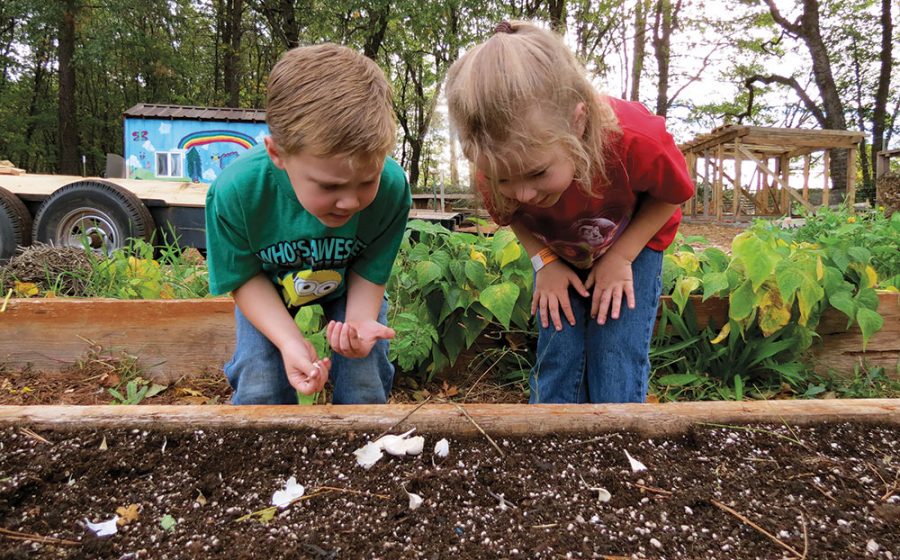Over the last decade of working with children in school gardens I have learned that when children are involved in the process of growing food, they will eat just about anything. Garden tacos are all the rage on our school campus at Chico Country Day School, and they are loved by kindergarteners and 8th graders alike. The recipe is quite simple and there are a million variations depending on what is in season and how spicy they like their tacos. We use leaves like spinach, mustard greens or lettuce as the taco shell and we add anything from parsley and chives to edible flowers for the taco filling.
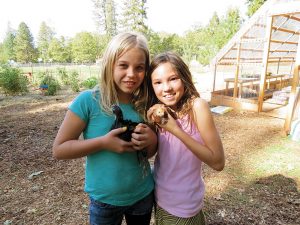 Most parents find it hard to believe that their child would willingly eat mustard greens or arugula since they are more familiar with the nightly battle over eating vegetables at the dinner table. This is where the magic of school gardens come in. I have seen students devour bok choy or green beans faster than my friend’s yellow lab devours a bowl of kibble. Students are adventurous and almost competitive when it comes to trying new foods. Even the most reluctant of eaters eventually comes around. Research by FoodCorps, a national service organization affiliated with AmeriCorps, shows that students in schools with more hands-on learning activities in gardens are eating triple the amount of fruits and vegetables than students who are less in touch with the origin of their foods.
Most parents find it hard to believe that their child would willingly eat mustard greens or arugula since they are more familiar with the nightly battle over eating vegetables at the dinner table. This is where the magic of school gardens come in. I have seen students devour bok choy or green beans faster than my friend’s yellow lab devours a bowl of kibble. Students are adventurous and almost competitive when it comes to trying new foods. Even the most reluctant of eaters eventually comes around. Research by FoodCorps, a national service organization affiliated with AmeriCorps, shows that students in schools with more hands-on learning activities in gardens are eating triple the amount of fruits and vegetables than students who are less in touch with the origin of their foods.
School gardens improve the health and nutrition of students and they also allow children important opportunities to explore nature through their senses. Gardens can be calming and soothing places for students, allowing them to connect with each other and the world around them. So much of the learning happens organically through the discovery of a ladybug, a ripe tomato, caterpillar infestation or the building of a fairy house or leprechaun trap.
Richard Louv, author of Last Child in the Woods, writes: “parents, educators, and health workers need to know what a useful antidote to emotional and physical stress nature can be. Unlike television, nature does not steal time – it amplifies it. In nature, a child finds freedom, fantasy, and privacy; a place distant from the adult world, a separate peace. Nature offers healing for a child living in a destructive family or neighborhood.”
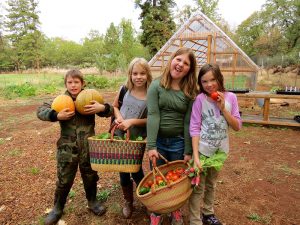 As an outdoor educator, I have observed this first hand. The child who has a hard time sitting still or listening in the classroom finds peace in exploring the soil looking for worms, nibbling in the garden, or building an elaborate creation with found materials. Students learn invaluable life skills while working together in the garden, such as caring, cooperation, curiosity, effort, initiative, patience, problem solving, resourcefulness and responsibility.
As an outdoor educator, I have observed this first hand. The child who has a hard time sitting still or listening in the classroom finds peace in exploring the soil looking for worms, nibbling in the garden, or building an elaborate creation with found materials. Students learn invaluable life skills while working together in the garden, such as caring, cooperation, curiosity, effort, initiative, patience, problem solving, resourcefulness and responsibility.
Cristan Norman, director of Oak Run Montessori School in Shasta County, takes pride in their thriving organic school garden and farm-to-fork breakfast and lunch programs. Oak Run strives to create and strengthen connections – not only between students, staff, families and community as all schools do, but there is a special emphasis on fostering connections between students and nature. They do this through their garden and outdoor education, community meals and events, family style lunches and service learning projects.
Norman says, “children who feel connected to each other, the adults around them and to the earth are happier, healthier and more excited to learn.”
Oak Run has seen great success in their switch from an industrial to family style model of school meals. Grant funds from Healthy Shasta allowed them to completely renovate their kitchen equipment in 2013. They now cook school meals from scratch, utilize foods grown in their garden, recycle and reduce waste through the use of chickens and composting on campus. The 7th and 8th grade students have had a huge role in setting up the new family style lunch service which includes a rotating seating chart; students 1st through 8th grade eating together at mixed-age tables, and teachers rotating on lunch duty eating with students.
“Since we changed over to family style lunches, our food waste has decreased significantly,” Norman says, “which is a big deal when we spend so much money on organic food! We attribute this to the fact that children are sitting down longer – taking more time to eat, and are more focused on having a meal and conversation.”
Interested in starting a school garden or supporting an existing garden in your community? Start small. Assess what resources already exist on your school campus. Be creative. Reach out to local businesses and organizations for assistance. Grow what you love and do not fret about losing a few crops – it’s all part of the process of growing food and working with nature.
Game Changing School Garden Resources:
http://www.lifelab.org @lifelabgarden
http://www.foodcorps.org @foodcorps
How to Grow a School Garden, A Complete Guide for Parents and Teachers by Arden Bucklin-Sporer and Rachel Kathleen Pringle
Last Child in the Woods, Saving Our Children from Nature-Deficit Disorder by Richard Louv
Localicious is a monthly column celebrating food in the North State. If you would like to suggest a food-related business or organization, email us at localicious@northstateparent.com.
Posted in: Localicious
Comment Policy: All viewpoints are welcome, but comments should remain relevant. Personal attacks, profanity, and aggressive behavior are not allowed. No spam, advertising, or promoting of products/services. Please, only use your real name and limit the amount of links submitted in your comment.
You Might Also Like...
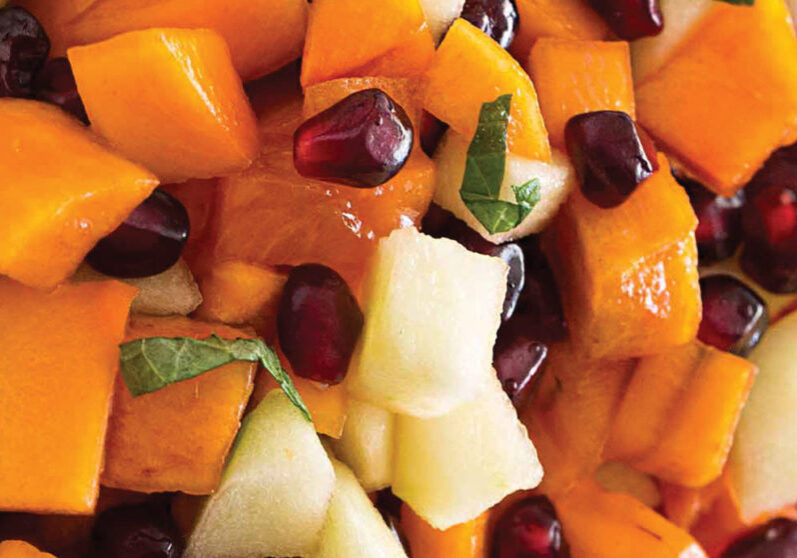
Persimmon Pomegranate Fruit Salad
A Fresh Side Dish for Thanksgiving: Persimmon Pomegranate Fruit Salad ~ Localicious What if our Thanksgiving or Friendsgiving meal was all about freshness and local, healthy foods instead of overeating? […]

9 Simple Steps for Optimum Health & Wellness
We are all familiar with the term “spring cleaning” when it comes to our homes. Sometimes it seems like we take better care of our homes than we do ourselves. […]
Localicious: Delectable Dairy Alternatives
These days, more and more people are searching for alternatives to dairy products. As dairy-free options become more popular, they are also getting easier to find. Whether prompted by a […]
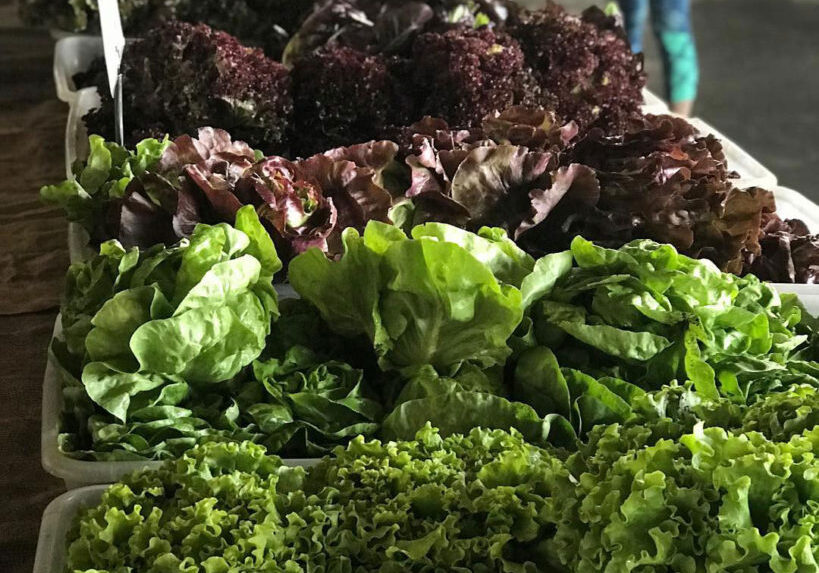
Salad Greens Grown With Regenerative Land Practices
One of my first jobs in the restaurant scene was the cold station or what is known as the pantry. I learned that the way you treat your greens at […]


